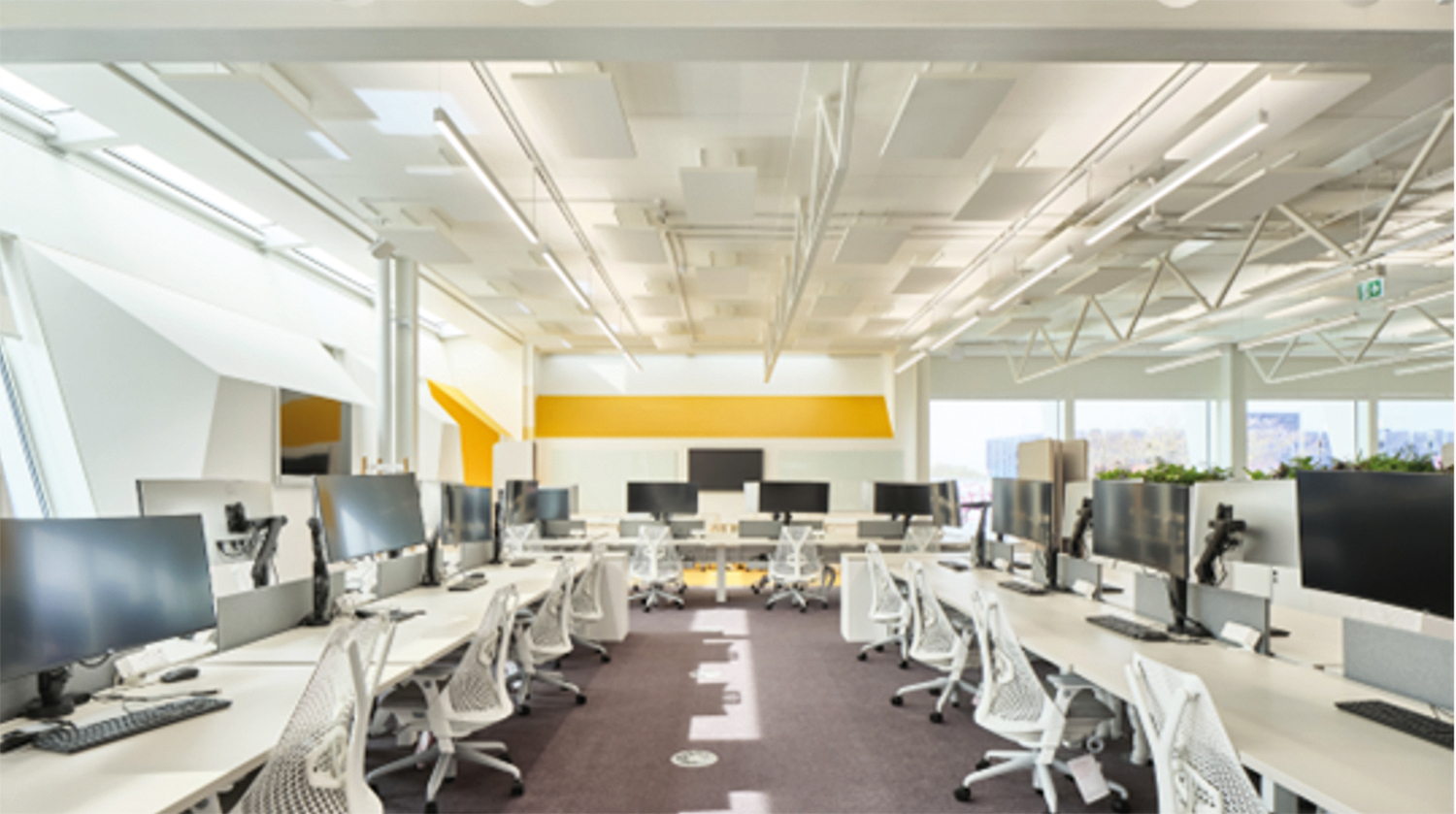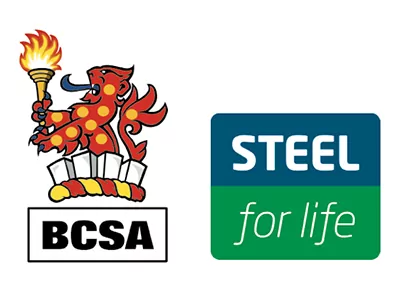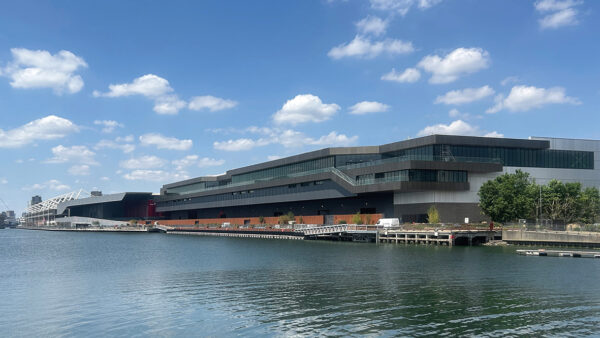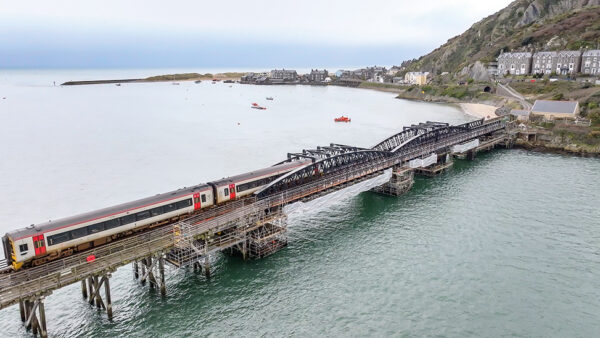
The Sky Innovation Centre represents the latest phase in the redevelopment of the media company’s west London campus.
Award: Sky Innovation Centre, London
Architect AtkinsRéalis
Structural engineer Arup
Main contractor ISG Ltd
Client Sky
Designed to include impressive wellness, sustainability and environmental performance credentials, the Sky Innovation Centre was delivered with a significant focus on driving down embodied carbon.
To this end, waste was reduced through prefabrication and efficient design, and by ensuring materials were responsibly sourced. One hundred per cent of construction waste was diverted from landfill and, with its supply chain partners, main contractor ISG says it eliminated the majority of single-use plastic packaging during construction.
Occupying the site of two former buildings, the new three-storey steel-framed building has been designed to maximise natural light within the majority of its open-plan accommodation.
The exterior features a ziggurat-style facade, created with splayed columns. Internally, a full-height atrium is flooded with daylight. Topping the building, a large photovoltaic (PV) array generates emission-free electricity.
Steelwork was chosen for a number of reasons, one of which was speed of construction. The frame was faster to build and required less trade coordination than alternative framing solutions.
Maximising offsite construction
Using steelwork also helped the project team maximise offsite construction, which enabled the job to progress during the Covid-19 pandemic. With minimal delay and few workers on site, the steel erection team were able to ‘bubble’ themselves and maintain effective Covid protocols, which meant the site was only shut down for three days.
The steel frame creates floorplates that are column-free, with perimeter columns spaced to provide direct support to a series of primary trusses. In this way, 13.5m-wide spans have been efficiently achieved with a minimal steel tonnage.

The trusses’ T-plate bottom chords minimise visual appearance, while facilitating simple welding of truss nodes. The internal visual impact of the trusses is further reduced by integrating the top chord box section into the depth of the slab.
During the design phase, several options were considered for the slabs. The choice of hollowcore slabs has provided a durable and robust solution that gives enough mass to control dynamic footfall response.
Arup says the highly efficient, beautifully crafted minimalistic steelwork trusses are integral to the architectural feel of the building. They are created with advanced structural analysis and design, achieving a steel weight of 60kg/sq m.
Ziggurat facade
The primary steel frame geometry is linear and regular for direct load paths and ease of construction. The eye-catching ziggurat facade is formed with shaped secondary steel members. This enabled the primary frame fabrication to start while final facade coordination continued, shortening the critical programme path by two months.
“This minimalist structure, comprising highly optimised steel floor trusses, supported on splay columns to reduce bending, maximises design for disassembly. A key aim of the client, adopted throughout the supply chain, was to minimise environmental impacts. The result is a very adaptable, high-quality workspace with excellent sustainability credentials.”
The design, and the use of splayed columns, helped reduce stress and deflection in the primary beams. They have also improved the footfall response of the slab, while providing stiff landing points for atrium stairs connecting onto the floorplates. This saved 19% CO2e compared with vertical columns.
“Beautifully detailed trusses, elegantly tapering splay columns and flat soffits provide Sky’s desired sophisticated industrial look and feel,” says Arup engineer Timothy Snelson.
“We were able to design out ceilings and other finishes, thereby substantially reducing the overall building embodied carbon.”
A further embodied carbon reduction was achieved by designing out any structural
topping for the internal slabs to allow future disassembly and potential recovery of the structure.
“We had a clear vision to create a unique and responsible building, steeped in our ethos to do the right thing for the environment and our people,” says Diana Foxlee, director of Sky Spaces.
“Staying true to these principles and using learnings from previous experience helped us make brave decisions, challenge industry standards and deliver even better outputs.”
Produced by BCSA and Steel for Life in association with Construction Management











